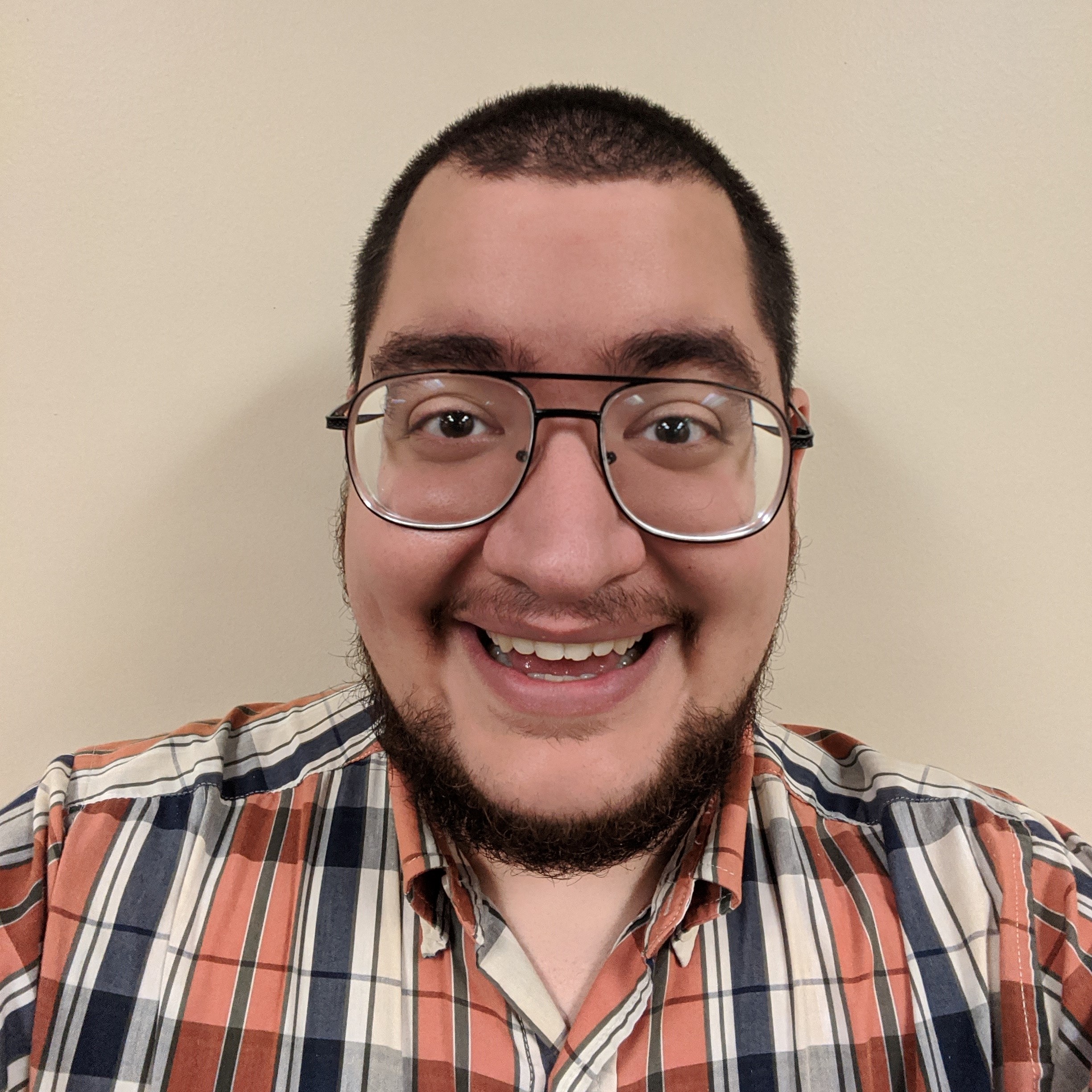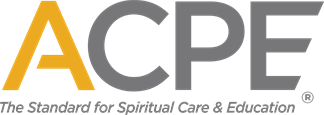
What is clinical pastoral education? This question hangs over prospective CPE students
from the moment they attempt to answer it as part of their application for admittance into any ACPE-certified program. It was the first question my educator, Dr. Jacob George, asked me during our introductory class. At first, the thought overwhelmed me. Where was I supposed to start? It seemed vague, as if the asker was holding the answer behind their back, waiting to correct me-- and yet, in Dr. Geroge’s class, no “correct” answers were forthcoming. Nudges were made, of course; there are wrong answers to the question. But in the absence of the One Right Answer™, my peers and I were drawn into the delicate process of reflection -- a process which has shaped my ministry in ways I hadn’t anticipated when writing my answer to the above question during the application process. To illustrate this, I invite you into the room of a patient I found crying in his room, shortly after entering the room. He’d said hello, welcomed me into the room, and then said the following phrase.“I’d never kill myself, chaplain-- but if I died tonight, I’d be okay with that.” These words washed over me as I sat at a patient’s bedside during my summer intensive unit at Baylor Scott & White’s Hillcrest campus in Waco, Texas. My stomach fell through the floor. He’d broken his leg the day before and had just been informed that he’d be wheelchair-bound for months. This, he soon discovered, meant at least partial dependence on his loved ones-- a plan with which he was discontent, to say the least. Dependence, to his mind, meant weakness . To him, the act of relying on someone to reach tall shelves meant that he wasn’t strong enough to handle his own problems. He desired more than anything to be self-sufficient, and his despair at losing this sufficiency-- even as a result of a traumatic accident -- had led him to earnestly, honestly wish for death aloud. To hear him tell it, he knew that this was what he wanted: to die, rather than “be a burden” on anyone else.
What the patient couldn’t have known was that the man sitting at his bedside had once said those very same words aloud. He had no way of discerning that I, the chaplain, in my blue plaid button-down and black slacks, had once professed a deep sense of nihilism, atheism, and hopelessness-- and that I, the otherwise calm and smiling young man sitting at the patient’s bedside, had once entertained the thought of ending my life. Like the patient, I had once known, beyond a reasonable doubt, that I wanted to die. In his words, then, I heard a familiar pain. I saw a reflection of myself, not as I am now , but as I had been -- a reminder of a formative and deep despair, and a healing process that had a profound impact on my understanding of God, humanity, and healing.
Importantly, this reflection shone in both directions. While he may not have known my history, the patient did know a few key facts. First, he knew that I was in his room. This may seem tautological, but the very presence of a non-medical professional opens opportunities for empathy and conversation not otherwise readily accepted and/or available to patients during a hospital stay. Second, he knew that I was at his bedside to care for him-- to share the weight of his diagnosis and to journey with him through this grief. In his lament that speaking to me was “weak” and would somehow “make (him) less of a man” because he “wasn’t handling it” himself, the patient acknowledged that my presence in the room was meant to aid him beyond his own understanding and capabilities. Multiple times throughout our visit, the patient reassured me that he’d “do anything for (his) friends and family,” including the provision of moral and grief support-- a fact which he explicitly stated lent him an understanding of my own presence in his room. Third, he knew that in some way, our lifepaths were informed by our coexistence during the COVID-19 pandemic. We spoke to each other through cloth masks that obscured the bottom halves of our faces, his family wasn’t allowed to visit his room, and I sat six feet away, to ensure safe social distancing. Multiple times, the patient mentioned that “all of this” was just too much. He’d point to his mask or poke his thumb in the direction of the window, making an unspoken assumption that I knew what he meant. When asked, he looked at me aghast and said plainly: “the pandemic. ” In his confusion, he demonstrated his understanding of the importance of shared experience. That is, just as I was seeing in him a reflection of myself, he was searching for something recognizable and relatable in me.
And herein lies the beauty and danger of being a hospital chaplain. Were I to focus on the patient merely as a reflection of my own life, I would lose the richness of his personal truths. After all, the patient and I are two distinct individuals whose lived experiences align in some ways, while diverging in many others. His personal struggle against perceived weakness resulting from any reliance on others is not , in fact, a struggle in my own life. Neither is my previous suicidal ideation a one-to-one match for the patient’s then-current longing for an end to his suffering. Were I less aware of the impact my past traumas and experiences have had on my everyday life, I may have recklessly imposed my history onto the patient’s, thus risking inflicting further trauma during a journey that ultimately aims for healing.
For me, the process of learning to avoid this imposition of self onto the lived reality of others is the core of clinical pastoral education. Throughout the summer, CPE provided me a safe space for self-reflection while constantly putting me in the presence of others whose lives were both similar (not same ) and wildly different from my own. In preparation for each week’s learning sessions, I was called to fully digest my week’s experiences-- both in-hospital and out. I was called to put into words my hopes, fears, and understandings in a way that was both vulnerable and empowering. During class, I was faced with the lived truths of a variety of individuals whose assumptions, convictions, and learned lessons shined new light on these reflections. So too, I was called to recognize the ways in which others’ lives closely mirrored my own-- and to be respectful of the differences and richness in each individual’s story.
In my experience, then, CPE is the process of coming face to face with these reflections. I have found myself drawn out of a self-centered state of focusing on myself, that I may recognize and respect the other fully-formed persons whose lifepaths have intersected with my own. This has opened my heart to patients in-hospital, of course; but it has also changed the ways in which I interact with my friends, family, and myself. Before CPE, I sought to provide answers for problems, each one rooted in my own life. Now, I seek to ask questions about the individual and their responses and needs. Before CPE, I found myself often preoccupied by my own life and problems. Yet now, by finding a new appreciation for the ways in which my own life intersects with the lives of others, I have found myself more present and engaged in each intersection. After all, I don’t want to look away from the mirror, lest I miss the richness of the reflection.
Ethan Cutrone took a summer intensive unit of CPE under the supervision of Dr. Jacob George. This past summer he was at Baylor Scott & White Hillcrest in Waco, Texas. Ethan is studying at SMU Perkins. Ethan can be reached at etscutrone@gmail.com. What is clinical pastoral education? This question hangs over prospective CPE students from the moment they attempt to answer it as part of their application for admittance into any ACPE-certified program. It was the first question my educator, Dr. Jacob George, asked me during our introductory class. At first, the thought overwhelmed me. Where was I supposed to start? It seemed vague, as if the asker was holding the answer behind their back, waiting to correct me-- and yet, in Dr. Geroge’s class, no “correct” answers were forthcoming. Nudges were made, of course; there are wrong answers to the question. But in the absence of the One Right Answer™, my peers and I were drawn into the delicate process of reflection -- a process which has shaped my ministry in ways I hadn’t anticipated when writing my answer to the above question during the application process. To illustrate this, I invite you into the room of a patient I found crying in his room, shortly after entering the room. He’d said hello, welcomed me into the room, and then said the following phrase.
What is clinical pastoral education? This question hangs over prospective CPE students from the moment they attempt to answer it as part of their application for admittance into any ACPE-certified program. It was the first question my educator, Dr. Jacob George, asked me during our introductory class. At first, the thought overwhelmed me. Where was I supposed to start? It seemed vague, as if the asker was holding the answer behind their back, waiting to correct me-- and yet, in Dr. Geroge’s class, no “correct” answers were forthcoming. Nudges were made, of course; there are wrong answers to the question. But in the absence of the One Right Answer™, my peers and I were drawn into the delicate process of reflection -- a process which has shaped my ministry in ways I hadn’t anticipated when writing my answer to the above question during the application process. To illustrate this, I invite you into the room of a patient I found crying in his room, shortly after entering the room. He’d said hello, welcomed me into the room, and then said the following phrase.